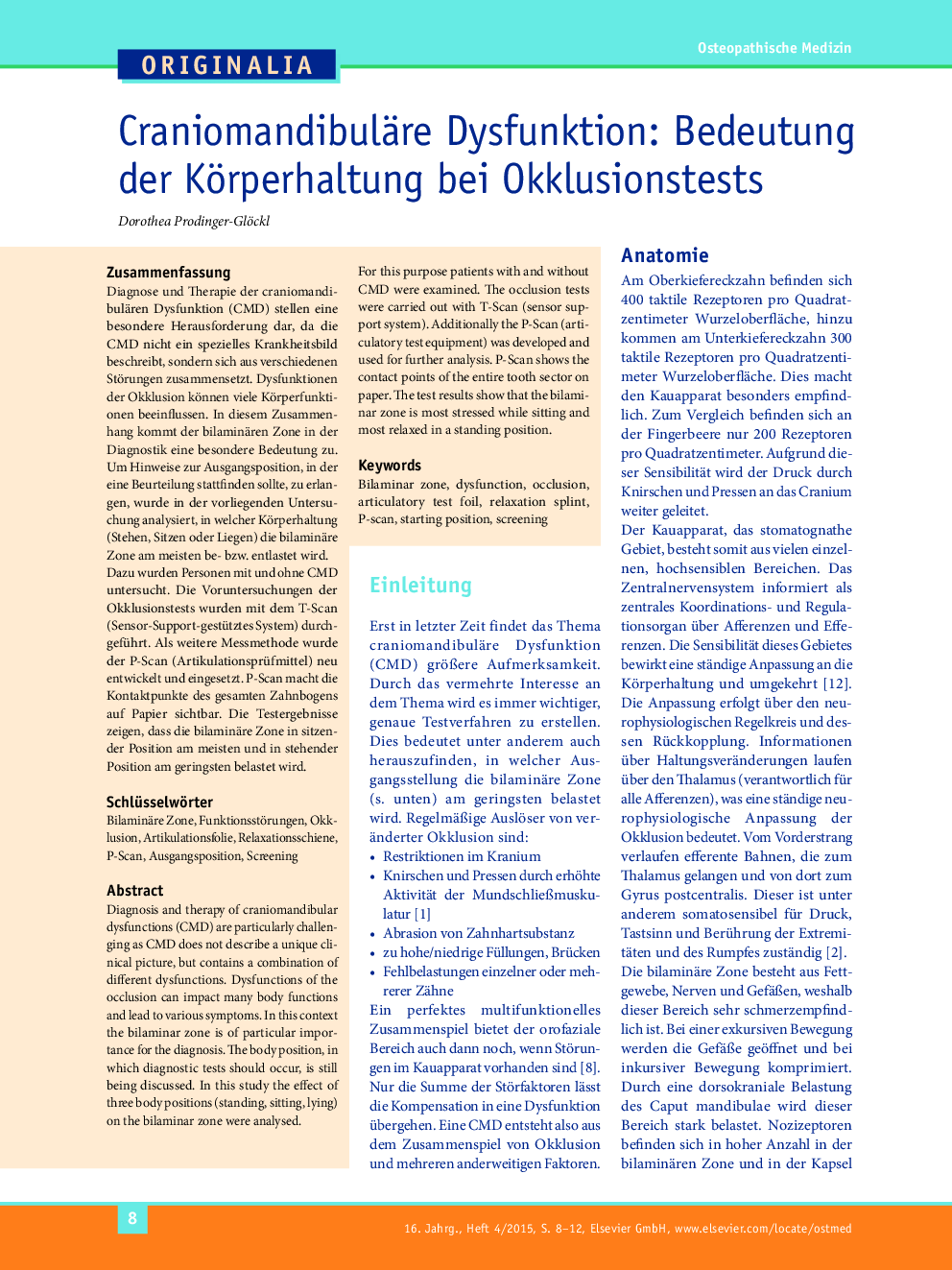| کد مقاله | کد نشریه | سال انتشار | مقاله انگلیسی | نسخه تمام متن |
|---|---|---|---|---|
| 2626315 | 1136030 | 2015 | 4 صفحه PDF | دانلود رایگان |
ZusammenfassungDiagnose und Therapie der craniomandibulären Dysfunktion (CMD) stellen eine besondere Herausforderung dar, da die CMD nicht ein spezielles Krankheitsbild beschreibt, sondern sich aus verschiedenen Störungen zusammensetzt. Dysfunktionen der Okklusion können viele Körperfunktionen beeinflussen. In diesem Zusammenhang kommt der bilaminären Zone in der Diagnostik eine besondere Bedeutung zu. Um Hinweise zur Ausgangsposition, in der eine Beurteilung stattfinden sollte, zu erlangen, wurde in der vorliegenden Untersuchung analysiert, in welcher Körperhaltung (Stehen, Sitzen oder Liegen) die bilaminäre Zone am meisten be- bzw. entlastet wird.Dazu wurden Personen mit und ohne CMD untersucht. Die Voruntersuchungen der Okklusionstests wurden mit dem T-Scan (Sensor-Support-gestütztes System) durchgeführt. Als weitere Messmethode wurde der P-Scan (Artikulationsprüfmittel) neu entwickelt und eingesetzt. P-Scan macht die Kontaktpunkte des gesamten Zahnbogens auf Papier sichtbar. Die Testergebnisse zeigen, dass die bilaminäre Zone in sitzender Position am meisten und in stehender Position am geringsten belastet wird.
Diagnosis and therapy of craniomandibular dysfunctions (CMD) are particularly challenging as CMD does not describe a unique clinical picture, but contains a combination of different dysfunctions. Dysfunctions of the occlusion can impact many body functions and lead to various symptoms. In this context the bilaminar zone is of particular importance for the diagnosis. The body position, in which diagnostic tests should occur, is still being discussed. In this study the effect of three body positions (standing, sitting, lying) on the bilaminar zone were analysed.For this purpose patients with and without CMD were examined. The occlusion tests were carried out with T-Scan (sensor support system). Additionally the P-Scan (articulatory test equipment) was developed and used for further analysis. P-Scan shows the contact points of the entire tooth sector on paper. The test results show that the bilaminar zone is most stressed while sitting and most relaxed in a standing position.
Journal: Osteopathische Medizin - Volume 16, Issue 4, December 2015, Pages 8–11
